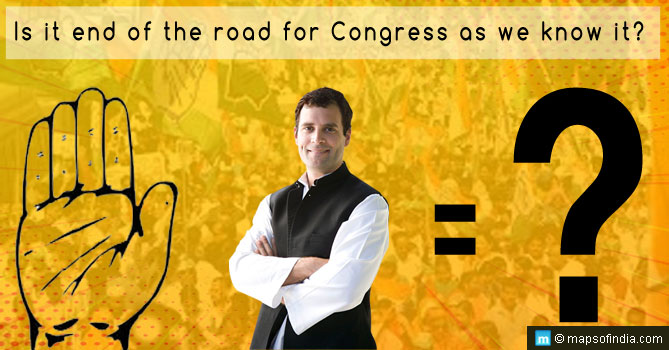Something which has negligibly changed over a period of time is the number of women in the political sphere of India. Though persistent efforts are being made to push the number by providing one-third reservation for women in various legal bodies including Parliament but still the percentage of women is just 5-10% across all political parties in India. The reservation has been mandated by the Constitution of India (73rd Amendment Act), enacted in 1992. As per the Act, minimum one-third of seats for women, both as members and chairpersons, would be reserved within all of the locally elected governance bodies of India, generally known as Panchayati Raj Institutions. But simply making such Act does not guarantee the active participation of women in politics. So the problem is different and related to the role of women in society and attitude of male towards females.
Every political party in India and across the world has more number of males than females as its members. In India, there is no change in this ratio since independence. Even after passing the Bill related to the reservation of women, it has changed insignificantly.
As per the UN’s 2008 survey of women in politics, South Africa (44.5%), Mozambique (34.8%) has more percentage of females in politics. In the 15th Lok Sabha elections, out of total just 59 were the women candidates as the members of Parliament. It rose the percentage to 10.7%. On the other hand at rural level i.e. the panchayati raj number of women participants are increasing. Certain states like Madhya Pradesh, Himachal Pradesh, Bihar and Uttarkhand have increased the reservation percentage to 50% from 33%.
Even the state of Kerala with the highest female (1,079) is to male (1,000) ratio show astonishingly low number of females in politics. Kerala contributes 20 candidates in Lok Sabha. In 2014 Lok Sabha elections both the Congress and CPI-M are going to field two women candidates each making the number four.
Not only the number but it has also been seen that women reaching at the top of any political party and taking part in decision making process is very less. Even if they are given chance to prove their worth they are given the responsibility of handling women’s wing of the party to tackle the issues related to women in the society such as rape and dowry but never inflation and economy etc. Hence women are again defined and their role is confined to women related issues not the issues in general. Why this partiality exists? Do they posses more potential than estimated?
Women leaders like Sonia Gandhi enjoy the dynastic advantage. Without a political background she is the President of the Congress, one of the biggest and oldest political parties in India.
Then we have women leaders who depend upon the dalit votes. Some women leaders reach where they are today because of their closeness to prominent male leaders.
Women leader like Mamata Banerjee has reached at the position on her own and set examples for others.
We also have women leaders like Rabri Devi. It is obvious that Rabri Devi was made the chief minister of Bihar because of the vested interest of Lalu Prasad Yadav. He was facing the charges of corruption when his wife was given the supreme position. She neither had education nor political knowledge but was heading the state. Women must come out of the pressure of male ideologies and think on their own. Running a nation or state is different from running a home.
The cause of concern is under-representation of women in political field and decision making. They are not able to express completely and shred themselves from taking part in the development process. But both the men and women should be given equal opportunity.
To change the position of women in politics, they must stand out as an independent winner. They should be well educated and versed with all the facets of politics. Women must be confident to take the necessary decisions apart from handling just women related issues. Lot more is required to be done for the political empowerment of the women in India.
Oxfam India Programme
Objective of Oxfam India Programme is to uplift the effective representation of women in the governance and decision making. They encourage more and more women to take part in politics and boost the capacity of women to contest elections. Oxfam also take certain affirmative steps like quotas to increase the participation of women in the state and national level government bodies.
Related Information :
Mission Mangalam for women empowerment
Will the Status of Women Ever Change?



